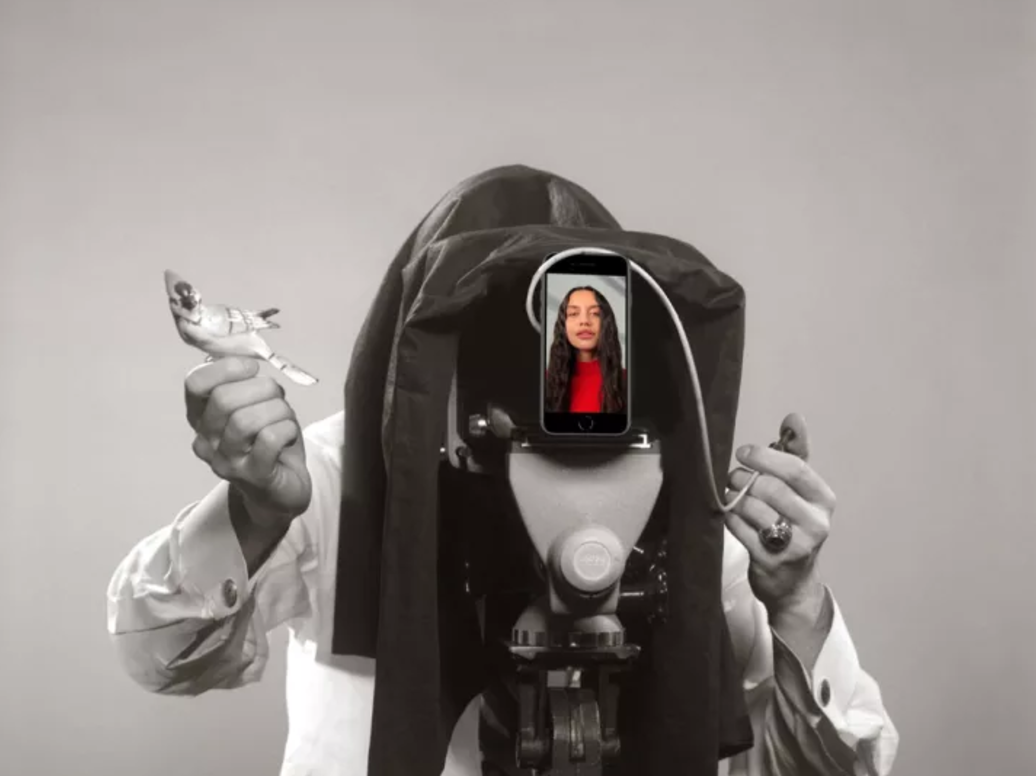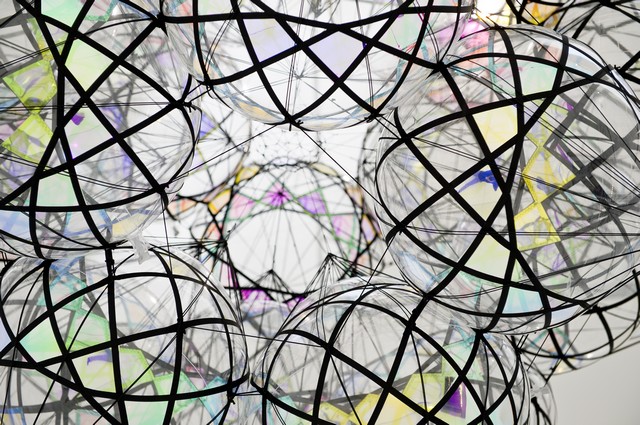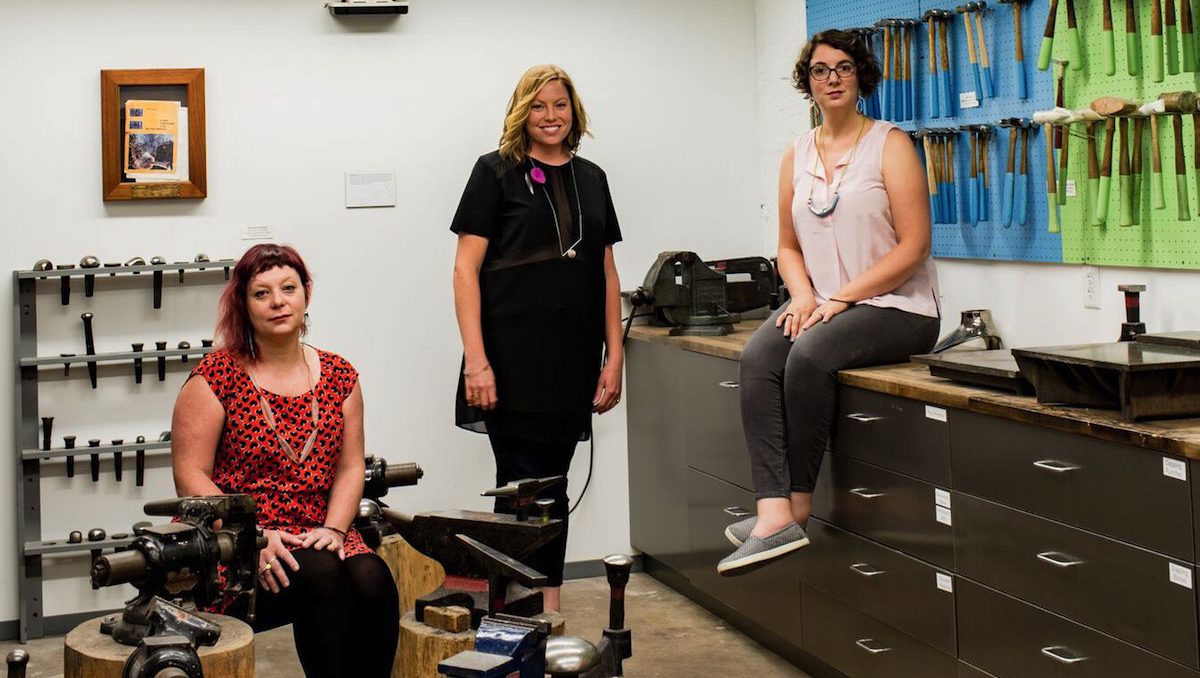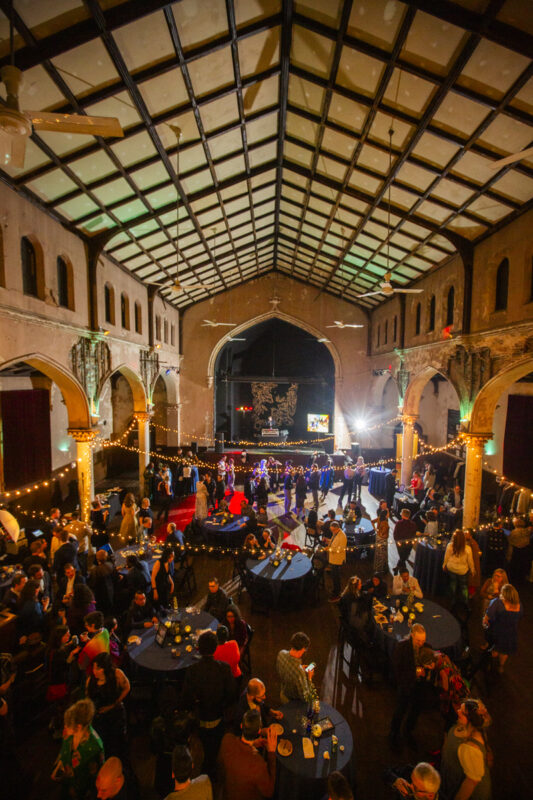Baltimore Jewelry Center Director Shane Prada Interviewed by Rachel Bone
In late 2012, Maryland Institute College of Art (MICA) took a hard look at the unfortunate financial status of their 20 year old Jewelry Department, and hesitantly dubbed it unsalvageable. No one wanted to see the department fold, but it was no longer profitable to the institution. Then, just as the prestigious department began to fall, a group of passionate teachers and students reached out, and refused to let it hit the ground.
In the summer of 2014, after months of scrambling, planning, negotiating the donation of equipment, and even navigating literal floodwaters, an independent non-profit called The Baltimore Jewelry Center (BJC) was born from the ashes of MICA’s program. In 2015, the BJC relocated from its original spot to an expanded space in the Center Theater on North Avenue, where it currently celebrates three years in business. The BJC now runs a full schedule of jewelry and metal-smithing classes, a full time gallery, and short-form workshops out in the community. For the BJC’s director, Shane Prada, the sailing is finally smooth.
Prada happened to be taking one of MICA’s Jewelry classes for fun when the department announced it was closing. With a background in education planning and an already-present itch to jump into something new, Prada was among the more passionate students advocating for ways to save the department. She and a handful of peers jumped into action, and taught themselves how to build something from scratch in Baltimore.
Sounding quite humble when discussing an impressive and complicated endeavor gone right, Prada answers the question of how it all got done with the assurance of a true believer in our city. “I’ve lived in Baltimore for 13 years,” explains Prada. “It’s the kind of city where if you want to start something, you can,” And start something she has. I spoke with her earlier this month, about what it took to turn an existing art department into its own thriving non-profit.
 April Wood, Shane Prada, and Beth Pohlman, Photo by Justin Tsucalas for the BmoreArt Journal of Art + Ideas Issue 03
April Wood, Shane Prada, and Beth Pohlman, Photo by Justin Tsucalas for the BmoreArt Journal of Art + Ideas Issue 03
How do you describe the BJC and what you guys do, to someone who’s never heard of you before?
We are a nonprofit metals and jewelry educational studio offering classes, workshop, and studio access to both new and established artists. We see ourselves as a small craft school dedicated to jewelry and metal arts. We offer an alternative to a university/college education for those who want to pursue metal-smithing or art jewelry. We also offer plenty of short-format workshops for those who just want a taste-test of what we do. In addition to our education program, we have a robust gallery and exhibitions program; we host at least seven exhibitions a year featuring the work of local, regional, national, and international artists.
Where are you from personally, and what brought you to Baltimore? What were you doing before starting Baltimore Jewelry Center?
I grew up in rural Mississippi with hippie parents and tons of animals. While I was never interested in art growing up, I was surrounded by people who made things with their hands. I came to Baltimore after undergrad with Teach For America to teach first grade. After getting my M.A.T. at JHU, I helped start one of the first charter schools in Baltimore, the Green School. After several years of teaching, I sampled a jewelry course at the Gemcutters Guild and fell in love with metalworking. From there I found the MICA Jewelry Program.
Can you tell me the history of the BJC? It was connected to MICA at one point, now it’s a non-profit – At what point did you become involved?
MICA had a notable jewelry program for 22 years that fostered a diverse community of students, many of whom became notable in the art jewelry field. That program came to an end in the spring of 2014. There was a lot of interest in starting a new organization. The core faculty and a group of students, myself included, came together to start a new program.
We were fortunate to have a community of students from the MICA program who helped us make essential connections to start building the organization. In 2013, we acquired nonprofit status, developed an education program, promoted our offerings, and launched a capital campaign. We officially opened our doors [at Meadow Mill in Woodberry] in the summer of 2014, and in July of 2015, we moved from our old location to our brand new studio in Station North. We have grown incrementally each year.

Can you talk about the 2014 flooding at Meadow Mill – is that what lead you to relocate?
There were many reasons that we needed to relocate. Our ventilation system needed major updates, our studio was too small, our location was not very visible or accessible, we didn’t have a gallery space, and of course, the history and future threat of flooding. In May 2014, one month before we were to officially open our doors as the Baltimore Jewelry Center, the Jones Falls flooded and we had over a foot of water in our space.
It definitely hit us hard, we lost several pieces of equipment that was mounted on the ground. The clean-up was difficult and took a long time. As anyone who has experienced flooding knows, it’s heartbreaking and disgusting! However, I think the timing of the flood helped many of our students who were hesitant about the move understand how important it was to relocate.
How hard was it to gain non-profit status? Do you have any background in business, or running a nonprofit, or did someone on the team?
Applying for nonprofit status was not very difficult. We had a great pro-bono lawyer who helped with this. Actually forming the program, determining our mission, vision, goals, structure, leadership plan, business plan, etc., that was the challenging part. I do have a background in starting programs and organizations that stretches back to my freshman year of college when I helped establish an undergraduate literary magazine.
Part of my role at the Green School was developing programs and curriculum and planning for the growth of the school. While I had never directed a nonprofit before, I love starting things and having a role in creating what an educational space will look like. Another student, who is now our board president, also had experience in this area. Of course, we were all novices to a large extent, so there was a huge learning curve. We had what seems like endless and very frequent meetings and had lots of conversations and lots of arguments. But we stuck with it and just kept plugging away.
What made you decide North Avenue was right for the new and improved Jewelry Center?
Station North is a great place to be if you want to make and share art. The art scene here has been steadily growing over the last decade thanks to many hard-working individuals and groups. Being in the footprint of MICA is incredibly helpful. We are able to schedule gallery exhibitions and events in conjunction with other art events in the neighborhood. Plus the neighborhood is centrally located making it more easily accessible to a broader range of patrons. We are just three blocks from Penn Station which is also wonderful. Also, we have the best landlord; Charlie Duff and his team at Jubilee Baltimore have done fantastic things for the city and we are so happy to be a part of that.
Did you look to other institutions in the city (or elsewhere) to lay out the plan for a sustainable business model?
Absolutely. We consulted with other maker spaces and small craft programs including Brooklyn Metal Works and the Textile Arts Center, both in Brooklyn, NY. We talked with our friends at Baltimore Clayworks and Baltimore Print Studios as well. We met with people connected to notable craft institutions like Penland, Haystack, and Arrowmount. We had hundreds of conversations and took tons of notes. We also were fortunate to work with a great accountant who helped us with our business model.

The BJC seems to have really settled well on North Avenue. Are you able to worry less about the bigger picture, at this point, and focus on the day to day?
Yes, finally! I feel like in the past year, I and my teammates have been able to focus less on how to stay afloat and more on everyday issues. We’ve been able to use our creativity more towards planning and programming. We are obviously still growing and we have a lot of work to do to secure a more sustainable operation (specifically in the fundraising department), but I finally feel like we have established ourselves. We can step back and breathe a little and have more fun.
Why do you think public access studios, and the DIY facilities like BJC, and Baltimore Print Studio, and OpenWorks, etc, have gotten so much momentum in Baltimore?
I think the DIY and maker space movement has gained traction across the country. Makers in Baltimore have been able to harness that interest and build organizations here. I’ve lived in Baltimore for 13 years, and I have always felt that it’s the kind of city where if you want to start something, you can. There is so much energy and support for start-ups here, and it’s still a pretty affordable place to live, which is important. This is also a city that needs a lot of love and improvement, and I think that a lot of people here want to move the city forward with innovative programs and ideas. I feel like Baltimore is a very accessible city and at root of the maker movement is accessibility so it makes sense that the movement has grown a lot here.
I’ve heard people say that you can’t run a gallery and also make art. Is that true of running a studio?
Yes and no. I truly believe that if you prioritize your goals and create a structure for yourself and commit to it, you can do both. And I think doing both can be tremendously beneficial, your art practice informing your day job and vice versa. But logistically it’s very hard. I struggle with making time to make art (not finding time, making time). It’s very easy for me to prioritize the goals of the studio ahead of my own making. And frankly it’s a cop-out. For me, running the studio is easier than making art at least to the extent that it doesn’t take the same amount of bravery and vulnerability. So often I will use work as an excuse to not make jewelry. I am still very much a student of jewelry so I struggle with confidence as well as building a personal practice.
I am really interested in supporting my staff in their own making. I really think that if their practice is robust and fulfilling, it benefits the organization. I have recently started seeking funding to support my staff in their own making, through stipends for actual studio time and stipends for educational expenses.
I know you have limited time to make it, but what is the biggest inspiration for your own work?
I am easily and often inspired. I work primarily with alternative materials like wood, plastic, and concrete so it’s easy for me to find inspiration in random places. I am really inspired by color and multitudes- candy, toys, stickers, fabric stores, etc. I love architecture and especially architecture in process (growth or decay). I am inspired by built landscapes far more than organic materials.
I also love fashion and find inspiration there. Instagram is great for learning about new and different artists and their processes and materials. I have a great collection of art jewelry and design books that I consult when I am sketching and developing new ideas. Perhaps my favorite way to get inspired is to go to museums and art galleries. I go up to Chelsea at least twice a year and spend a day exploring galleries and taking notes and sketching. It’s wonderful.
Anything you wish you’d known before diving into running a non-profit?
I wish I had had a stronger business background, even just an accounting class under my belt. Building a strong business plan is so essential to developing a strong organization. If I had had some business education, I think it would have greatly benefitted us. We could have also consulted with someone in the field to help with our business plan.
I think the most beneficial element to starting a successful organization is time. We didn’t have much time, but when others ask for my input on the topic, that’s the first thing I say. Take your time!
Finally, a bizarre question. In googling articles about the Baltimore Jewelry Center, I came across a conservative leaning website (redmaryland.com) which featured BJC in a column called “waste of the week” in 2015, referencing financial assistance the BJC applied for, to renovate and expand the new location on North Ave. Quote: “What is the state of Maryland doing providing a $75,000 loan to a niche art studio in Baltimore City? How does that benefit the entire state of Maryland?”
I hope it is apparent that bmoreart.com does not agree funding arts organizations is a waste, but I wondered if you would like to publicly tackle a personal response to the larger question of why Arts organizations like yours should be funded with public funding.
Blast from the past! Wow, I had forgotten about that! First of all, the article is referencing not a loan but a bond bill. Nonprofits are able to apply for bond bills from the State of Maryland. It’s a pretty laborious process, but it’s a key way that many nonprofits acquire funding for building and expanding their spaces. We were encouraged by our state delegates to apply, and we were strong candidates (our funding was nearly complete, we were asking for a relatively small amount, etc.).
As for how I would respond to this question, I would first grant the author some empathy. I understand how it could seem to an outsider that what we were doing (building a jewelry and metals studio) was frivolous and niche-y and that it wasn’t a great candidate for a bond bill. Indeed, we are not direct service providers like many nonprofits.
However, I would explain that what we were doing is far bigger than just opening a jewelry studio. We were building a unique educational space that was not available anywhere in the region. Our program allows people who can’t afford art classes at colleges or universities a chance to learn at a very affordable price. Craft classes, especially metals classes, are very hard to find. We are offering a resource to the broader community (including kids and teens) that isn’t available anywhere else. Furthermore, our exhibitions and retail program draw many tourists and visitors to our neighbor. Plus, we are located in what was once a condemned building. Our presence supports the ongoing revitalization of Station North.
I will note that we were not granted a bond bill and that the only comment that the post inspired was one from someone in our community who pointed out the limitations in the author’s argument.
What do you think you’d be doing if you weren’t doing this?
Oh, good question. I think I would still be involved in education, perhaps as an educator but more likely in a leadership role. I love developing programs and carrying them out, managing projects, building and managing budgets, all the nitty-gritty stuff. But what I love most is connecting with students and providing transformative educational experiences for people. I’m also an avid equestrian so I could see myself managing a barn. I daydream about running a gallery one day and also about being a full-time artist. It’s good to daydream.
To find out more about the Baltimore Jewelry Center, check out their website and calendar of events.
Top Image: April Wood, Shane Prada, and Beth Pohlman, Photo by Justin Tsucalas for the BmoreArt Journal of Art + Ideas Issue 03






